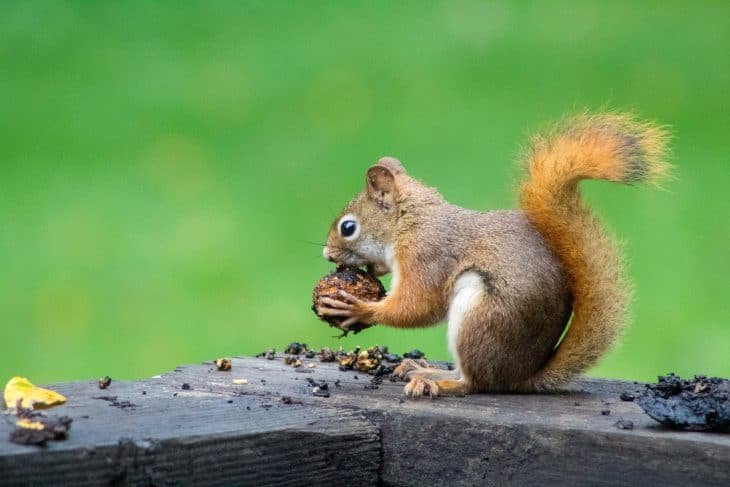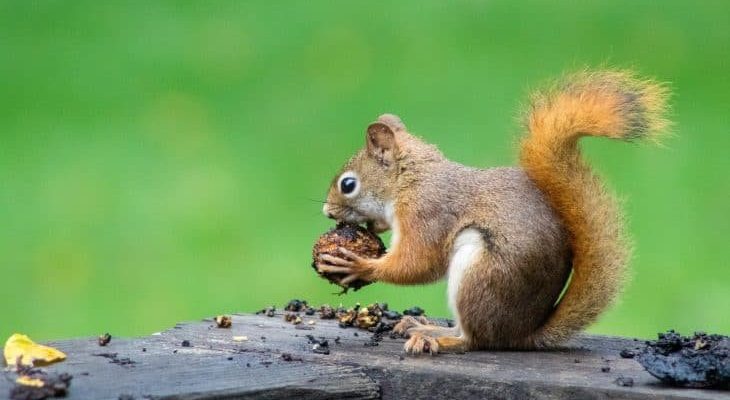
Let’s dive into some captivating facts about squirrels. Maybe you’ll discover something new that sparks your curiosity or makes you appreciate these little critters even more. Whether you see them as a delightful part of your local park or a nuisance in your backyard, understanding more about squirrels can give you a fresh perspective on these furry entertainers.
Squirrels Are Found All Over The World
You might be surprised to learn that squirrels are pretty much everywhere! From the bustling streets of New York City to the tranquil forests of Canada, you’ll find them in nearly every habitat, except for Australia and Antarctica. There are over 200 species of squirrels that belong to three main families: tree squirrels, ground squirrels, and flying squirrels.
Tree squirrels are the ones you usually see in parks, leaping from branch to branch. They thrive in urban areas, often raiding bird feeders. Ground squirrels, on the other hand, prefer open fields and grasslands, where they dig extensive burrow systems. And don’t be fooled by the name of the flying squirrel; although they don’t truly fly, they can glide impressive distances using a special membrane from their wrists to their ankles. Isn’t it incredible how diverse they are?
Squirrels Can Jump Great Distances
Think about the leap of a squirrel. They can jump up to 10 times their body length! That’s like you or me jumping across the width of a swimming pool in one bound. Their powerful back legs give them the ability to spring into the air and land accurately on tree branches or ledges, helping them escape predators and find food.
Here’s a fun part: squirrels usually land on their feet, thanks to their flexible ankles. This unique feature allows them to twist their body mid-air if they misjudge a landing. Imagine them practicing like little gymnasts each time they leap!
Their Teeth Never Stop Growing
Squirrels have a little-known secret: their front teeth, called incisors, never stop growing. That’s right! These small critters need to gnaw on things constantly to wear down their teeth. Otherwise, their chompers would grow too long for their mouths, which could be quite a problem.
You might usually see them chewing on nuts or wood, but they also munch on bird feeders and even garden vegetables. If you’ve ever planted a garden, you might have encountered a squirrel pulling up your seedlings to snack on. It’s just their way of keeping those ever-growing teeth in check!
Squirrels Communicate with Each Other
Have you ever noticed how squirrels seem to chatter back and forth? They have a whole range of vocalizations and body language they use to communicate. Squirrels are known for their high-pitched warning calls, which alert others when a predator is near.
They also use tail movements to send messages. When a squirrel flicks its tail, it can signal excitement or alertness. Isn’t it fascinating that they have their own little language? It’s a reminder that there’s a lot more happening in nature than we might realize at a glance.
They Are Expert Hoarders
Squirrels are natural hoarders, and they take this job very seriously. They collect nuts, seeds, and fruits and bury them all over their territory. This behavior is essential for their survival, especially in winter when food is scarce.
Interestingly, squirrels have an incredible memory. They can remember dozens of hiding spots, and studies show they can even find their buried treasures months later. However, not all nuts are retrieved, and some of those forgotten snacks might just sprout into new trees. So, in a way, squirrels are nature’s little gardeners!
Squirrels Have Incredible Senses
When it comes to their senses, squirrels are equipped with impressive tools to thrive in their environments. Their vision is particularly sharp, allowing them to detect even the slightest movements. They can see in color, which helps them spot ripe fruits and nuts against the backdrop of green leaves.
Their sense of smell is also extraordinary. Squirrels can sniff out buried nuts even when they’re deep in the ground. Imagine having a nose that could help you find snacks buried under layers of dirt! This keen sense also comes in handy for identifying predators lurking nearby.
They Can Rotate Their Ankle 180 Degrees
One of the coolest things about squirrels is their flexible ankles. They can rotate their back ankles up to 180 degrees, which helps them descend trees headfirst with ease. This maneuver is particularly useful when they’re trying to escape from predators or get to their food quickly.
Think of it this way: while most animals climb up trees with a straightforward method, squirrels can do a full 180-degree twist, allowing them to navigate their surroundings with fantastic agility. It’s just another reason why they seem so acrobatic and skilled at what they do!
Squirrels Play a Role in Ecosystems
Even if they seem like just charming little creatures, squirrels play a vital role in their ecosystems. By hoarding nuts and seeds, they help in the growth of forests. Every time a squirrel forgets a buried nut, that seed has a chance to grow into a new tree.
This behavior helps maintain biodiversity, impacting other wildlife that depends on trees for food and shelter. So next time you see a squirrel, remember that they’re not just playful critters; they’re also hardworking little agents of nature!
Squirrels may seem like simple backyard animals, but they’re full of surprises! From their incredible jumping abilities to their essential role in our ecosystems, they bring a lot to the table—literally! Each fact we’ve explored reveals just how unique and adaptable these small creatures are. Next time you see a squirrel dash by, take a moment to appreciate the incredible world these furry friends inhabit. Who knew that something so seemingly ordinary could hold such extraordinary qualities? So, keep your eyes peeled; there’s always more to discover about the fascinating lives of squirrels.

